New tool allows scientists to peer inside neutron stars
Thursday, 20 October 2022 11:40 Imagine taking a star twice the mass of the Sun and crushing it to the size of Manhattan. The result would be a neutron star-one of the densest objects found anywhere in the Universe, exceeding the density of any material found naturally on Earth by a factor of tens of trillions.
Neutron stars are extraordinary astrophysical objects in their own right, but their extreme densities might als
Imagine taking a star twice the mass of the Sun and crushing it to the size of Manhattan. The result would be a neutron star-one of the densest objects found anywhere in the Universe, exceeding the density of any material found naturally on Earth by a factor of tens of trillions.
Neutron stars are extraordinary astrophysical objects in their own right, but their extreme densities might als Astronomers create new technique to assist in search for dark matter
Thursday, 20 October 2022 11:40 Meteors may help astronomers devise a new way to locate dark matter - mysterious and invisible particles that have so far only been discerned by the effect they have on the natural world.
Five times more prevalent than ordinary matter, dark matter makes up about 85% of the total mass of the universe, and about a quarter (26.8%) of the universe's total mass and energy. Humans are unable to
Meteors may help astronomers devise a new way to locate dark matter - mysterious and invisible particles that have so far only been discerned by the effect they have on the natural world.
Five times more prevalent than ordinary matter, dark matter makes up about 85% of the total mass of the universe, and about a quarter (26.8%) of the universe's total mass and energy. Humans are unable to Viasat and Inmarsat will work with CMA to demonstrate customer benefits of proposed transaction
Thursday, 20 October 2022 11:40 Viasat Inc. (NASDAQ: VSAT) and Inmarsat report they are working with the UK's Competition and Markets Authority (CMA) to demonstrate how the planned combination of the companies will benefit customers by improving efficiencies, lowering costs, and increasing the availability of in-flight connectivity (IFC) around the world.
The CMA announced today it will refer the transaction to a Phase 2
Viasat Inc. (NASDAQ: VSAT) and Inmarsat report they are working with the UK's Competition and Markets Authority (CMA) to demonstrate how the planned combination of the companies will benefit customers by improving efficiencies, lowering costs, and increasing the availability of in-flight connectivity (IFC) around the world.
The CMA announced today it will refer the transaction to a Phase 2 Distribution partners selected for Inmarsat's SwiftJet Business Aviation Inflight Connectivity Service
Thursday, 20 October 2022 11:40 Inmarsat's ground-breaking new SwiftJet inflight connectivity service for the business aviation market has passed an important milestone, after industry heavyweights Satcom Direct and Honeywell were named as the first global distribution partners.
The announcement comes less than five months after SwiftJet was launched as the world's fastest business aviation inflight connectivity service
Inmarsat's ground-breaking new SwiftJet inflight connectivity service for the business aviation market has passed an important milestone, after industry heavyweights Satcom Direct and Honeywell were named as the first global distribution partners.
The announcement comes less than five months after SwiftJet was launched as the world's fastest business aviation inflight connectivity service NASA extends contract with Planet Labs granting access to EO data to 300,000 scientists
Thursday, 20 October 2022 11:40 Planet Labs PBC (NYSE:PL), a leading provider of daily data and insights about Earth, reports that NASA has exercised an option to extend its contract with Planet under the Commercial SmallSat Data Acquisition (CSDA) Program through September 2023.
Planet has been providing data to NASA scientists and federally funded researchers under this program since 2018 and the company looks forward
Planet Labs PBC (NYSE:PL), a leading provider of daily data and insights about Earth, reports that NASA has exercised an option to extend its contract with Planet under the Commercial SmallSat Data Acquisition (CSDA) Program through September 2023.
Planet has been providing data to NASA scientists and federally funded researchers under this program since 2018 and the company looks forward Shadow hunters capture Didymos asteroid eclipsing stars
Thursday, 20 October 2022 11:29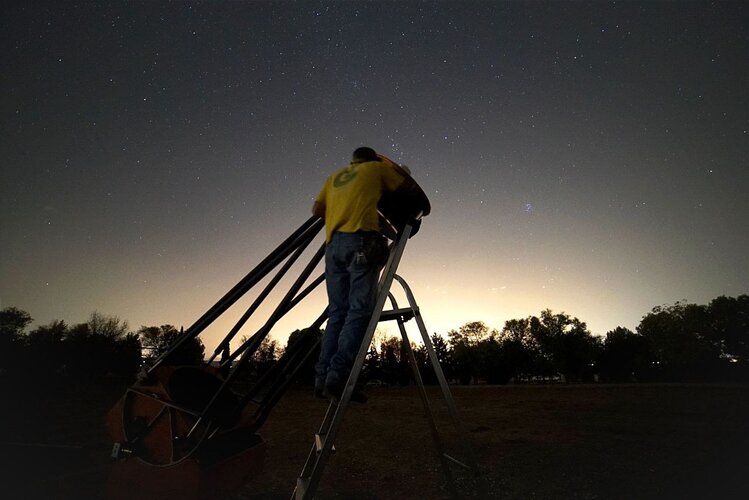
After months of effort, astronomers have succeeded in capturing the momentary shadow cast by the Didymos asteroid, from tens of million km away as it passed in front of far-distant stars – a feat of observation only made possible when both the trajectory of the asteroid and the precise location of the stars are known. Even in that case, to have a chance of success, several observers had to be placed in meticulously predicted locations across the path of the shadow, to glimpse the fleeting fading of the star within just a fraction of a second.
Info session from the ESA Council meeting
Thursday, 20 October 2022 11:00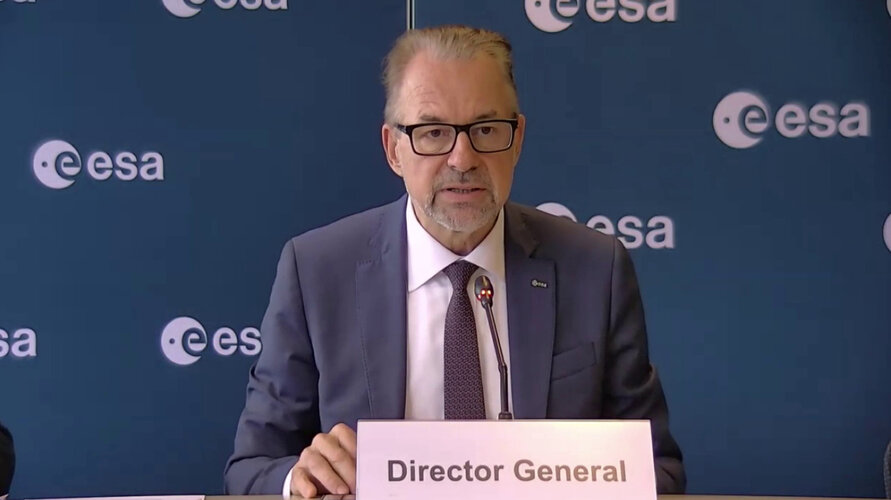 Video:
00:31:00
Video:
00:31:00
Watch the replay of our Q&A with the media to learn about the outcomes of the 310th session of the ESA Council. Updates are provided on the ambitious package presented by ESA for the 22/23 November ESA Ministerial Meeting in Paris, but also on the further expansion of ESA memberships, the future of ExoMars, Space Transportation and the overall, delicate economic situation.
Mapping planet Earth for better positioning: ESA’s GENESIS mission
Thursday, 20 October 2022 09:43
ESA’s Navigation Directorate is planning a new satellite whose results will enable the generation of an updated global model of Earth – the International Terrestrial Reference Frame, employed for everything from land surveying to measuring sea level rise – with an accuracy down to 1 mm, while tracking ground motion of just 0.1 mm per year. This improvement, at a stroke, will have a major impact in multiple navigation and Earth science applications, including enhancing the precision of the Galileo navigation system. This mission, called GENESIS, is being proposed to ESA’s Council Meeting at Ministerial Level next
Relativity Space expands engine test facilities at Stennis
Thursday, 20 October 2022 07:03
Launch vehicle developer Relativity Space will expand its engine test site at NASA’s Stennis Space Center, the second company in as many months to announce new or expanded facilities there.
The post Relativity Space expands engine test facilities at Stennis appeared first on SpaceNews.
Space Force briefing on military space race catches Jeff Bezos’ attention
Wednesday, 19 October 2022 21:38
U.S. Space Systems Command officials earlier this month gave an unclassified briefing to Blue Origin founder Jeff Bezos on the power competition taking place in the space domain.
The post Space Force briefing on military space race catches Jeff Bezos’ attention appeared first on SpaceNews.
Starlink taking preorders for high-speed private jet broadband service
Wednesday, 19 October 2022 20:53
SpaceX started accepting preorders Tuesday from high-flying private jet owners willing to pay a hefty price to receive high-speed Starlink services in the air.
The post Starlink taking preorders for high-speed private jet broadband service appeared first on SpaceNews.
UK defense committee calls for thorough Eutelsat/OneWeb review
Wednesday, 19 October 2022 20:11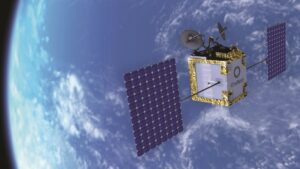
Eutelsat and OneWeb’s planned merger requires the “strictest possible scrutiny,” a cross-party group of British government officials said in a report warning the U.K has become a “third-rank” power in space post-Brexit.
The post UK defense committee calls for thorough Eutelsat/OneWeb review appeared first on SpaceNews.
Iconic 'Pillars of Creation' captured in new Webb image
Wednesday, 19 October 2022 17:42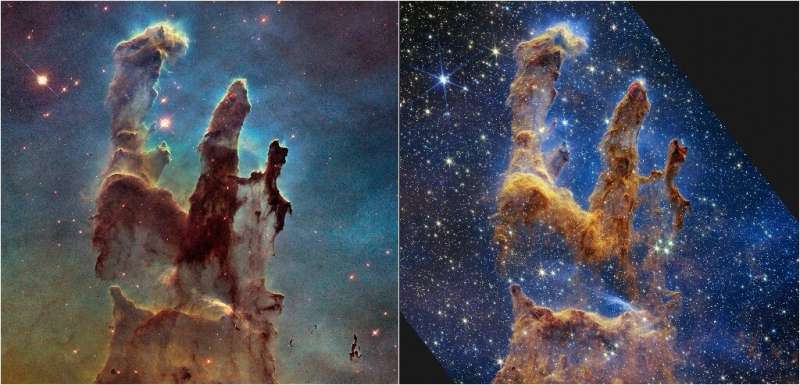
The James Webb Space Telescope captured the iconic "Pillars of Creation," huge structures of gas and dust teeming with stars, NASA said Wednesday, and the image is as majestic as one could hope.
The twinkling of thousands of stars illuminates the telescope's first shot of the gigantic gold, copper and brown columns standing in the midst of the cosmos.
Ariane 6 first flight planned for fourth quarter of 2023
Wednesday, 19 October 2022 17:25
Ariane 6, the new heavy-lift launch system being developed by the European Space Agency, will make its inaugural flight as soon as the fourth quarter of 2023. Briefing media gathered at ESA’s Paris Bertrand headquarters on 19 October, Director General Joseph Aschbacher said sufficient progress had been made over the past several months to anticipate a Q4 2023 first flight, pending the realization of three key milestones before April next year.
Foust Forward | Hard choices facing commercial space stations
Wednesday, 19 October 2022 17:14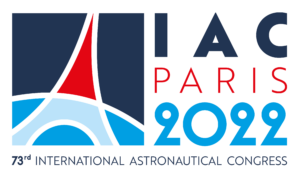
For all the optimism about the development of commercial space stations, the International Astronautical Congress also showed the lingering concern about the business case for such stations, be it for research, tourism or other space agencies.

